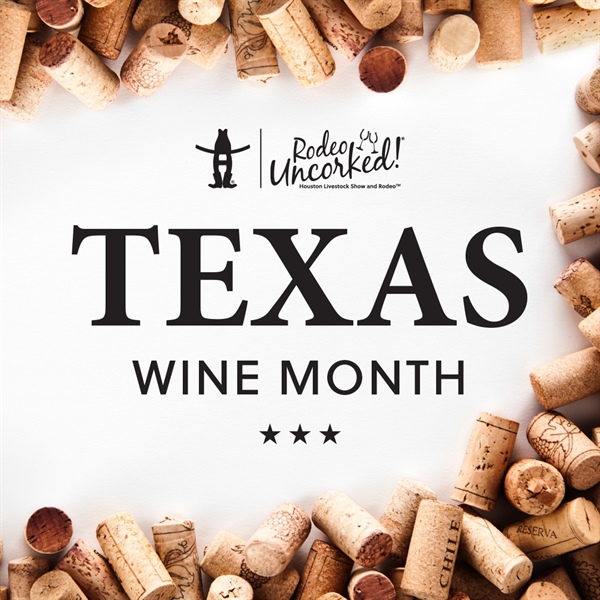By Nan McCreary
October is here, and if you’re a Texas wine aficionado, this is your opportunity to sip your way through the state in honor of Texas Wine Month.
Texas Wine Month was started by the Texas Department of Agriculture in 1999 to celebrate the emerging wine industry started in the 1970s by a small group of spirited wine pioneers. Now in its 23rd year, the 31-day celebration has become more than just a nod to those early grape growers — it recognizes that Texas has a flourishing wine culture that adds more than 13 billion dollars to the state economy. With more than 500 wineries, and more opening every month, Texas is now the fifth largest wine producing state in the country, following only California, Washington, New York and Oregon.
While the pandemic, the deep freeze of 2021, and the drought of 2022 presented serious challenges to Texas grape growers, the industry is thriving, nonetheless. Undaunted by these “speed bumps,” wine growers continue to push the envelope, with great success, to achieve advancements in grape quality, grape variety, education, and national presence. Here’s what’s happening in the Texas wine industry today.
Grape Variety
Texans, by nature, are explorers. Since the 70s, grape growers have been experimenting with different wine varieties to see what works and what doesn’t. Based on these years of experience, Texas now successfully produces wines from more than 50 varieties of grapes. Grapes that shine include Mourvèdre, Tannat, Tempranillo, Sangiovese and Viognier, among others. With the state’s diverse terroirs, winemakers continue to try out new varieties, primarily those from the arid, warm Mediterranean climates of the southern Italian peninsula, southern France, and Spain. New kids on the block include three grapes from Portugal: Souzoa, Touriga Nacional and Alicante Bouschet. According to the USDA 2019 Texas Wine Grape Varieties survey, plantings of Touriga Nacional and Alicante Bouschet increased by 283 percent and 322 percent in Texas, respectively. Wineries are also adding new wine styles to their portfolios, from complex red blends to Pet-Nat wines (short for the French ‘pétillant naturel,’ meaning naturally sparkling) to frizzantes (lightly sparkling). Indeed, it’s a great time to be drinking Texas wines.
Quality
Texas wines are increasingly getting better. Years of trial and error have taught Texas winemakers more about what their land and climate have provided, and they are putting that knowledge to good use. In this year’s prestigious San Francisco Chronicle Wine Competition, 53 Texas wines were among the nearly 6,000 entries. These wineries earned 13 Best of Class, 17 Double Gold Medals, 56 Gold Medals, 180 Silver Medals and 72 Bronze Medals for a total of 338 medals. Closer to home, in the Houston Livestock Show and Rodeo™ International Wine Competition, 480 entries (of 2,862) were from Texas wineries. Top Texas Wine was awarded to Hye Meadow Winery Boooom Red, Texas High Plains, and Top Texas Winery was Becker Vineyards. Panel judges awarded a Double Gold Medal, the most prestigious medal, to 13 wineries. Not only are Texas wines taking home medals in wine competitions, but many are also receiving accolades from serious wine devotees. For example, Dallas-based wine writer Andrew Chalk, who writes on wineries and destinations all over the world, recently conducted a series of tastings of Texas red wines, all 10+ years old, to determine how they age, a test that he calls “the ultimate test of gravitas.” In fact, many of these wines “passed his test” with flying colors and were recommended for aging and enjoying later.
Education
Texas colleges — specifically Texas A&M, Texas Tech, Grayson Community College in Denison, and Palo Alto College in San Antonio — have developed wine programs in viticulture and enology for students interested in pursuing a career in the wine industry. Demand for these programs continue to grow. Another opportunity for budding winemakers is the wine incubator program at Kerrville Hills Winery, recently founded by Texas winemaking guru John Rivenburgh to help start-ups “manage the capitalization of their business, learn winemaking techniques, and work in a collaborative environment.” Members learn through hands-on winemaking at the facility, plus they receive help for launching and operating their business.
Labeling Laws
With Texas now a world-class wine region, the state legislature recently passed new labeling laws for the state’s wines. The legislation propels the wine industry forward by requiring that in order to use a Texas AVA (American Viticultural Area), County or Vineyard designation on a wine label, 100% of the grapes must be grown in the state of Texas. Previously consumers had no idea how much wine from a Texas winery was actually made with grapes from the state. The new law, which took effect September 1, 2021, will put Texas on an equal footing with wine origin protection, like the largest and most prominent wine growing states across the U.S., including California, Oregon, Washington, and New York.
Clearly, it is a great time to be enjoying Texas wines. One of the best ways to celebrate is to purchase a Texas Wine Month Passport ticket (good from Oct. 1 to Oct. 31) for visits to over 45 participating Hill Country wineries. The ticket includes complimentary tastings and exclusive discounts. Ticket price is $120 per couple or $85 individual. For more information on opportunities available during Texas Wine Month, visit texaswinetrail.com and join the Rodeo Uncorked! Facebook group. For an interesting video on Texas wines, visit ‘Texas Wines’ Celebrates Winemaking in the Lone Star State | Wine Spectator.


